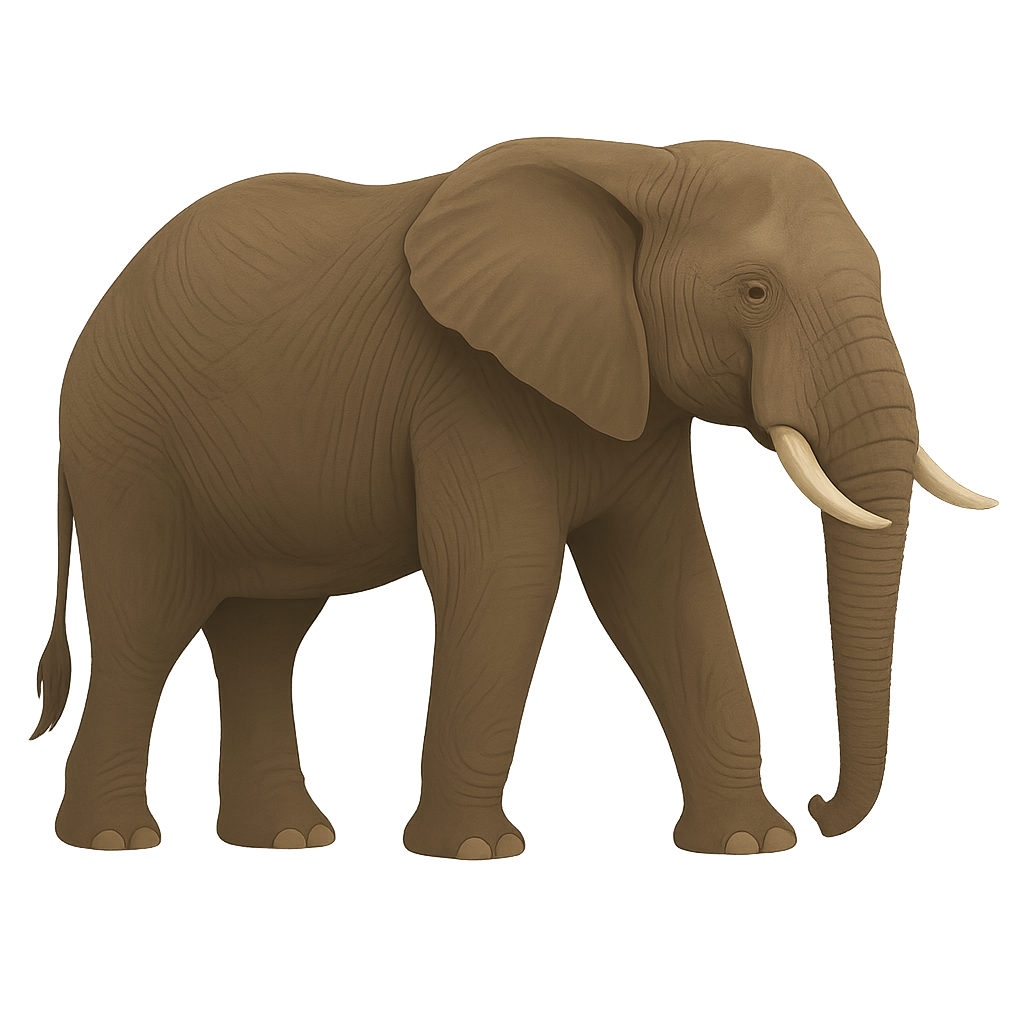Your wildlife photography guide.
Explore the african savanna elephant in detail, study its behavior, prepare your shots.
Where to observe and photograph the african savanna elephant in the wild
Learn where and when to spot the african savanna elephant in the wild, how to identify the species based on distinctive features, and what natural environments it inhabits. The WildlifePhotographer app offers tailored photography tips that reflect the african savanna elephant’s behavior, helping you capture better wildlife images. Explore the full species profile for key information including description, habitat, active periods, and approach techniques.
African Savanna Elephant
Scientific name: Loxodonta africana

IUCN Status: Vulnerable
Family: ELEPHANTIDAE
Group: Mammals
Sensitivity to human approach: Shy
Minimum approach distance: 110 m
Rut period: March to June
Gestation: 640-660 jours
Births: November to March
Habitat:
Savanna and woodlands
Activity period :
Activity varies depending on season, weather, or human pressure.
Identification and description:
The African Savannah Elephant is the largest land mammal, and the largest of all terrestrial animals. It can stand up to 4 meters tall at the withers and weigh between 4,000 and 7,500 kg. Its coat is gray, with rough skin often covered in dust or mud to protect it from the sun and parasites. The African Savannah Elephant is easily recognizable by its large ears, shaped like the map of Africa, which help regulate its body temperature. This elephant is primarily herbivorous, feeding on leaves, bark, fruits, and plants. It inhabits savannas, grasslands, and open forests across sub-Saharan Africa. The African Savannah Elephant is a social animal, living in family groups led by an older female. It plays a crucial role in its ecosystem by creating openings in vegetation and dispersing seeds. However, the species is threatened by habitat loss, poaching for its valuable tusks, and conflicts with human communities. The African Savannah Elephant is currently listed as vulnerable by the International Union for Conservation of Nature (IUCN).
Recommended lens:
70-200 mm – adjust based on distance, desired framing (portrait or habitat), and approach conditions.
Photography tips:
Approach slowly and quietly. The forest elephant is more elusive and harder to observe than its savanna counterpart, requiring patience and careful observation.
Photograph in the early morning or late afternoon to take advantage of soft light and capture images that highlight its dense forest environment.
Look for intimate moments. Forest elephants are often seen in small groups, within thick vegetation or near water sources. Be ready to capture subtle social interactions and quiet contact between individuals.
Keep your distance and avoid interfering with their natural movements. Their shy nature and forest habitat make them especially sensitive to human presence.
The African forest elephant is classified as endangered by the IUCN, mainly due to deforestation, habitat fragmentation, and ivory poaching. It is vital to respect its fragile environment, minimize disturbance, and follow all local conservation regulations to help protect this discreet and vulnerable species.
The WildlifePhotographer App is coming soon!
Be the first to explore the best nature spots, track rutting seasons, log your observations, and observe more wildlife.
Already 1 441 wildlife lovers subscribed worldwide

